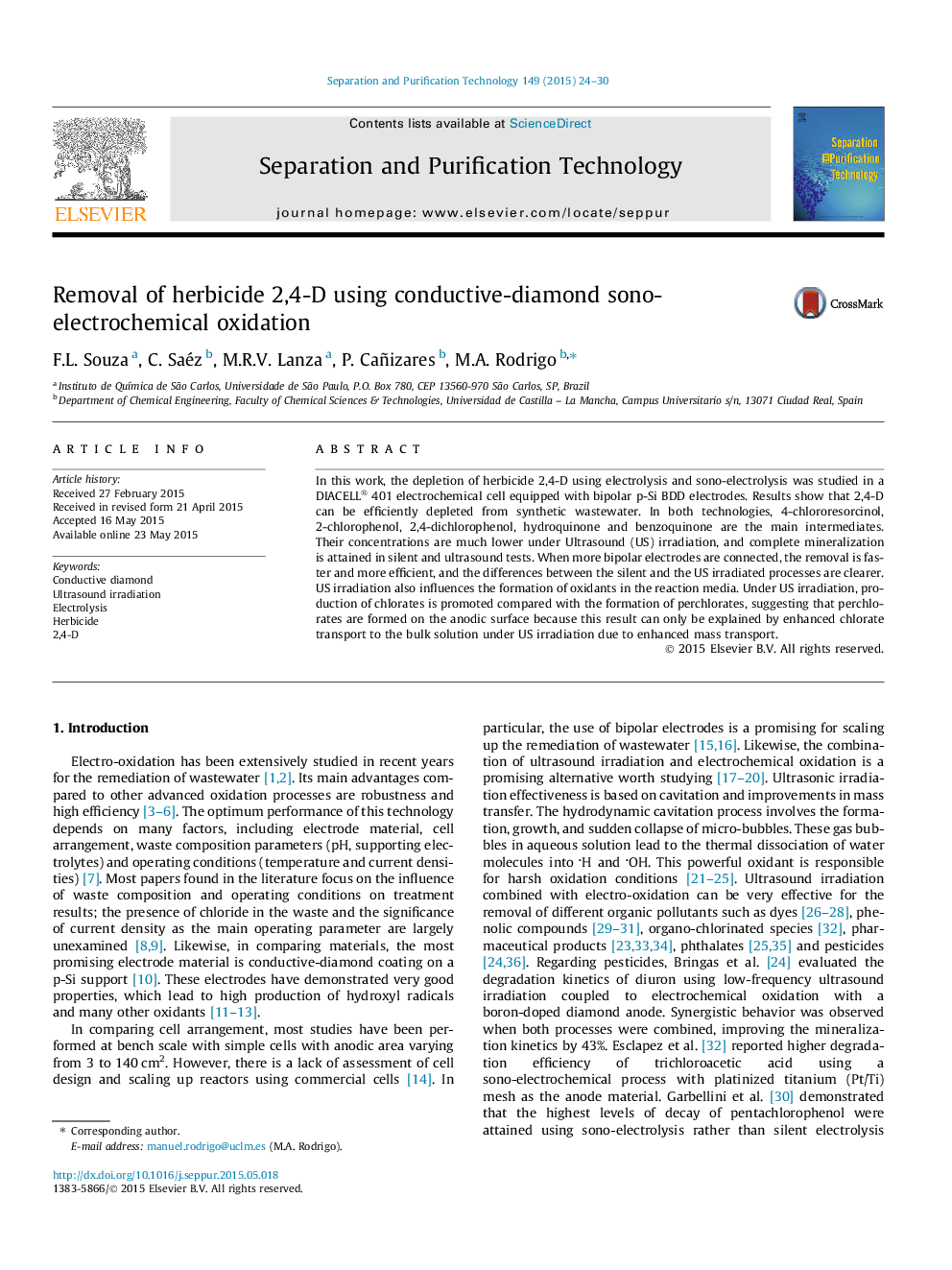| Article ID | Journal | Published Year | Pages | File Type |
|---|---|---|---|---|
| 640561 | Separation and Purification Technology | 2015 | 7 Pages |
•Total mineralization can be successfully attained by electrolysis with bipolar electrodes.•Combined US irradiation and electrolysis lead to a very efficient process.•Lower cell voltages in the US irradiation process reduce the energy demand.•US irradiation promotes to production of chlorates and not perchlorates.
In this work, the depletion of herbicide 2,4-D using electrolysis and sono-electrolysis was studied in a DIACELL® 401 electrochemical cell equipped with bipolar p-Si BDD electrodes. Results show that 2,4-D can be efficiently depleted from synthetic wastewater. In both technologies, 4-chlororesorcinol, 2-chlorophenol, 2,4-dichlorophenol, hydroquinone and benzoquinone are the main intermediates. Their concentrations are much lower under Ultrasound (US) irradiation, and complete mineralization is attained in silent and ultrasound tests. When more bipolar electrodes are connected, the removal is faster and more efficient, and the differences between the silent and the US irradiated processes are clearer. US irradiation also influences the formation of oxidants in the reaction media. Under US irradiation, production of chlorates is promoted compared with the formation of perchlorates, suggesting that perchlorates are formed on the anodic surface because this result can only be explained by enhanced chlorate transport to the bulk solution under US irradiation due to enhanced mass transport.
